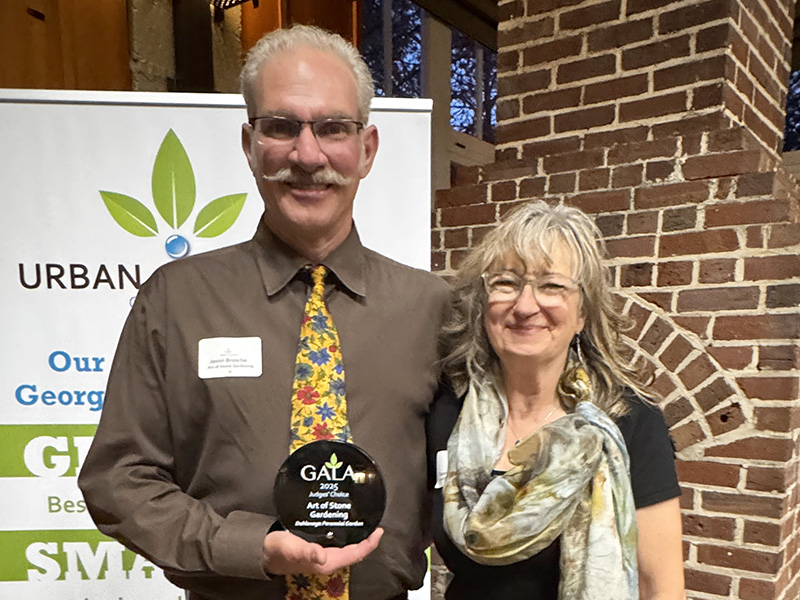Sustainable Habitat, Seasonal Interest

These homeowners had many goals. They wanted a lawn-less landscape, with no grass or mowing required. The design needed to offer visual appeal throughout the year. They wanted to attract and support wildlife, including birds, bees, and deer, while enjoying it all in their backyard. The space had to be easy to maintain. Also, consideration had to be given to the septic tank navigation, as the backyard was located directly over the home’s septic field. The clients prioritized creating a sustainable habitat, using as many native plants as possible. They also insisted that we use only organic products for weed control. They requested two water features: One audible from the upper deck and one visible from the lower level of the house. Another request was that we install a group of cisterns to capture rainwater that would connect to the irrigation system.
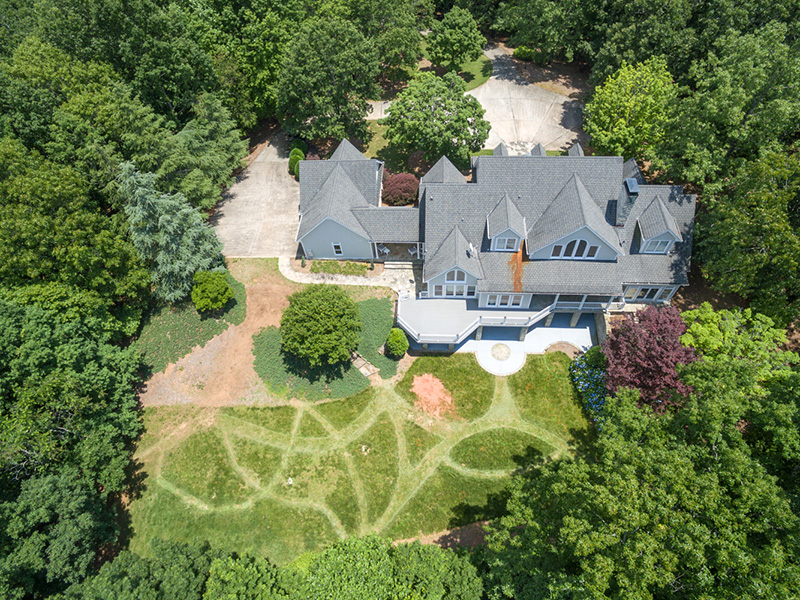
BEFORE: This is a drone shot showing the pathway locations. The dead grass spot is the location of the septic tank. Landscape Architect, Scott McLendon, used this drone shot to prepare the planting plan and design.
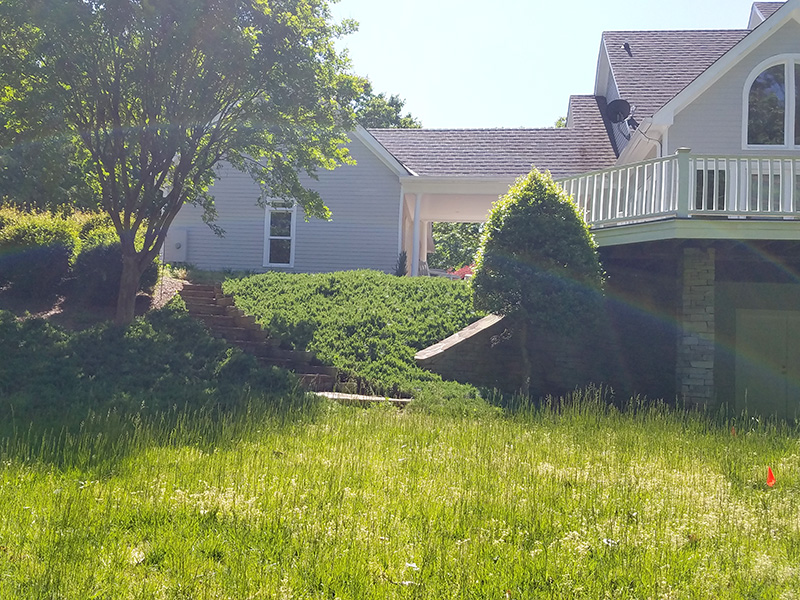
BEFORE: This photo is looking up towards the hillside where the water feature would eventually be. The clients loved the birds that frequented the Natchez Crape Myrtle, so we centered this part of the garden around it.
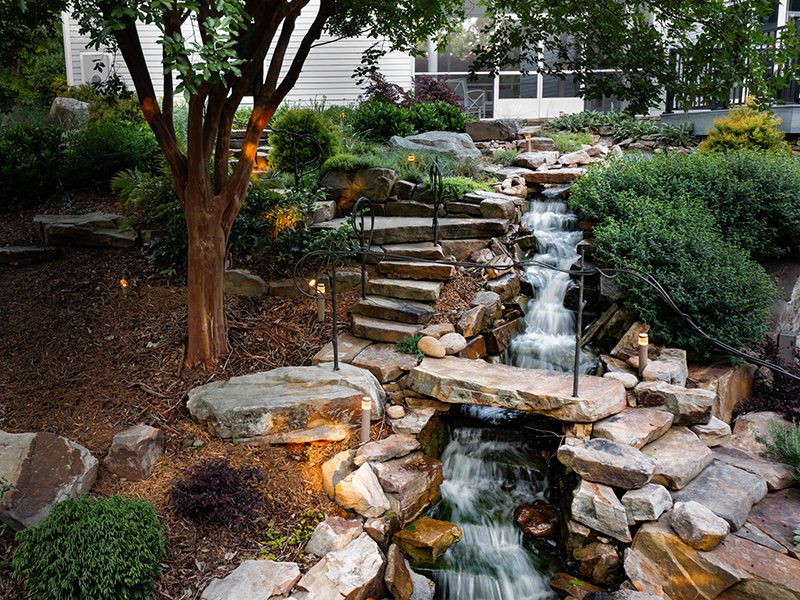
AFTER: This shows the rambling water feature on the juniper hillside, and how we placed the waterfall around the Natchez Crape Myrtle. Once the steps were in place, the client wanted a handrail for support. Andrew Crawford Iron Works created this garden inspired handrail. The shrubs around the water feature are Hypericum.
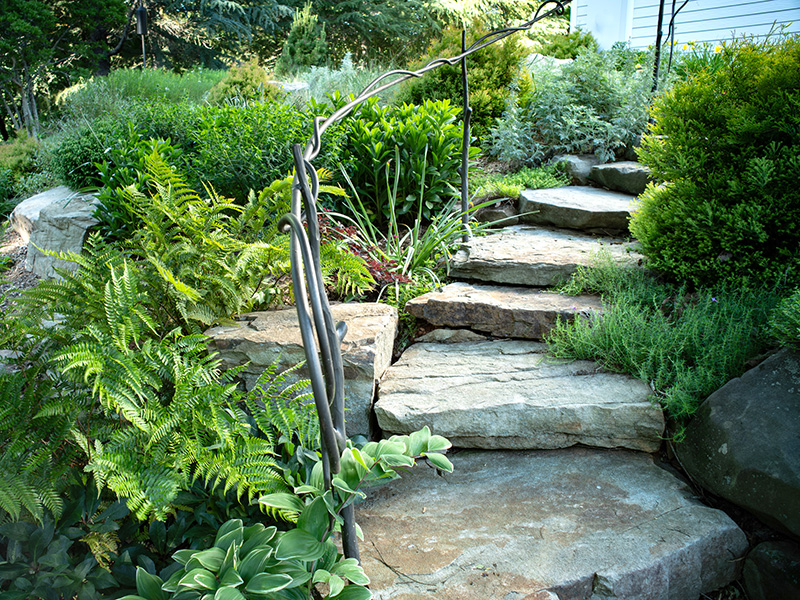
AFTER: Close-up of ferns, Solomon seal, Shasta Daisy, creeping Phlox, dwarf Cryptomeria, and Arborvitae. This photo also shows the detail of the twining iron handrail.

AFTER: This photo shows the plantings on the other side of the water feature. We found that deer leave many native grasses alone. This planting shows the Milkweed, Iris, and Coreopsis. One goal was to reduce weeding by letting plant material police itself. Once a particular plant did well, we added more into open spots. Panicum virgatum was a prolific spreader, tolerant of wet conditions, dry conditions, and deer.
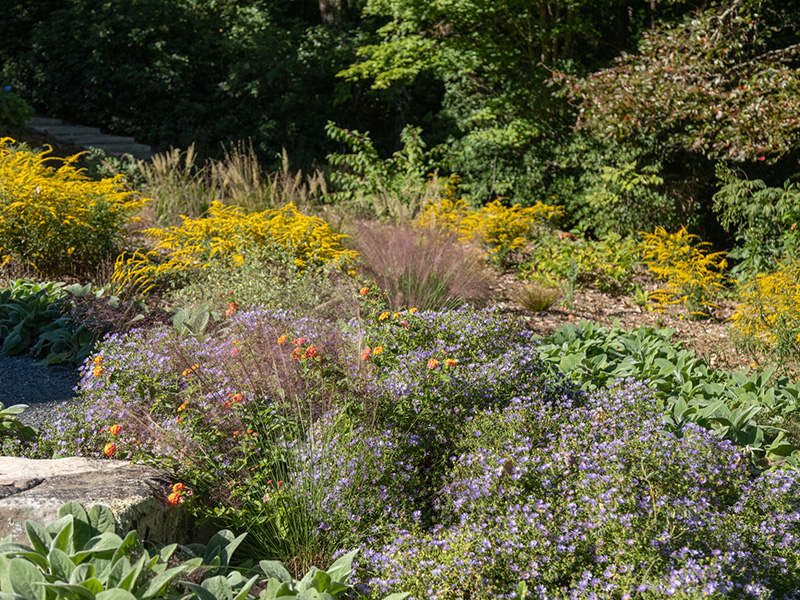
AFTER: Dwarf Solidago is another wonderful native. We also added Lantana throughout the garden for long lasting blooms. In the back left, Feather Reed grass is visible.
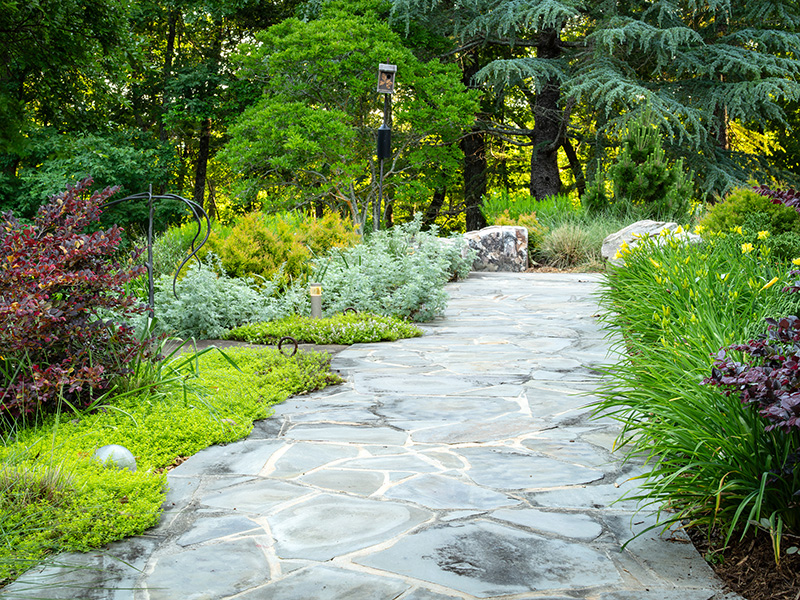
AFTER: Looking out from the house, the waterfall garden entrance is on the left side, starting with the iron railing. To soften all the stonework, we added creeping Thyme, Artemisia, dwarf Loropetalum, and dwarf Arborvitae. The two boulders at the end are for sitting. We added a Japanese Black Pine for interest behind the boulders. The large Deodar Cedar appears to frame the picture.
Judges' comments about this project
- Beautiful
- Fantastic project
- Love everything about this project
- The railings are gorgeous
- Love the bridges
- Taking it from a turf area to a wildflower meadow is amazing
- I would pay admission to see this
- Stone materials match well
- Clean site in spite of no chemicals
- Photos are wonderful
- Stunning and sustainable project
About Art of Stone Gardening
Art of Stone Gardening has a 20-year history of creating fine landscapes that blend master-level stone masonry with beautiful and sustainable plantings. But we’re doing more than crafting outdoor spaces. We’re building outdoor lifestyles—from the ground up. Our family-owned, small business has put our signature on more than 1,200 projects in Dahlonega, Dawsonville, Gainesville, Lake Lanier, White County and all over the region.
